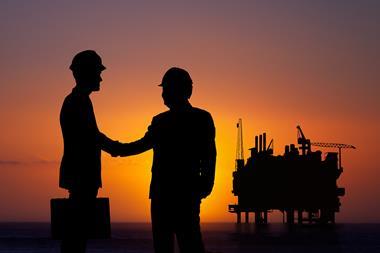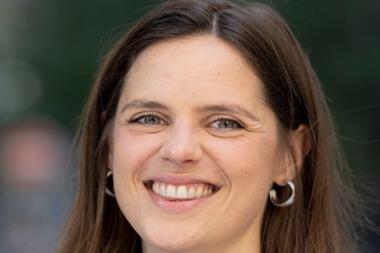As natural disasters increase at a worrying rate, Michael Faulkner asks a panel of experts whether the industry is doing enough to manage the risks
The panel
Peter Taylor, information director, Faraday
Stefano Tranquillo, UK operations manager, FM Global
Andrew Dear, technical services director, AMG
Michael Faulkner, news editor, Insurance Times
James Rayner, London market director, GAB Robins
Nick Gardener, HSE and risk manager, Elementis
David J Grant, underwriting director, risk solutions, R&SA
Martin Caddick, senior vice president, risk consulting practice, Marsh
John Moore, head of the natural hazards team, Benfield
Benedict Burke, managing director, operations, Crawford & Co
Chair: Hurricanes and flooding have been in the news over the last year or so and they seem to be increasing in severity. Are these just events that the insurance industry has to cope with or are they evidence of more worrying trends that will challenge the industry?
Benedict Burke: Predicting these events, as a company within the supply chain, has become more and more important. We don't have the risk models within our business and are thus reliant on others to do that predictive analysis. As a company that needs to respond in the front line which is loss adjusting, we would welcome an opportunity to pre-plan with others far more. And that, in my view, is the biggest issue that we currently face in terms of our ability to respond, and to respond collectively.
Chair: What more do you think could be done to become more proactive?
Burke: If you take Carlisle as an example of a recent event, our catastrophe plan was individually signed off with our client base, but neither they or ourselves shared the planning with other local stakeholders such as fire, police, committee groups, school education authorities, the tourist board and the local industry. They are drafted in our silos and implemented in the same way. In Carlisle all these stakeholders, who have huge interests, acted independently and it took several weeks for joined-up thinking to occur, which then created collective and appropriate solutions. We as an industry needs to work harder to get this right.
Chair: What challenges do the apparently increasing weather extremes pose for an insurance company?
Peter Taylor: Quite a few. One question we're asking ourselves is whether hurricane activity has fundamentally changed. If it has, and it may not be the case, is it due to global warming or is it just the medium term changes you get due to variations in sea surface temperature and La Nina and the like? The thing is that this is the second year where we've had exceptional hurricane activity in the US and it's a growing challenge. Who is to say next year will be any different? So I think we have to look at pricing.
Some of the market predictive models seem to have missed out some of the problems that we've encountered with Katrina and Wilma. I imagine other brokers and underwriters will be in a similar position.
The other thing that worries us at the moment with Katrina is the way the litigation might develop, especially on coverage questions about flood versus wind. But I would say the answer isn't to decry models, but to try to work with them and improve them so that they more accurately reflect the exposures that we have.
John Moore: Looking at your original question of trends, what people don't know is the particular factors that actually influence the trends. I agree that part of it could be about climate change, but we know there are various cycles within the atmosphere and their effects like the AMO, (the Atlantic Multi-decayal oscillation), which is activity risk varying over a 10 or more year period. Are we at a high of multi-decayal oscillation? You also have the AO, (Arctic oscillation) and the NAO (North Atlantic oscillation), so it becomes very complex. And it becomes complex for us as an industry to listen to all the science and then have a particular conclusion, to say whether climate change is an effect we have seen in the last couple of years or not.
But the bottom line is that we have to cope. The industry has changed in the past 10 years by using modelling and risk management tools to learn to cope better, and they have helped to improve the way that risks are managed within the insurance and reinsurance industry.
But there is no doubt that it's early days and we need to continue to evolve. The limitations in what we currently see and what we use in terms of risk management and modelling are particularly evident when we have unprecedented situations like we now have. The job of the industry is to ensure that the risk management firms provide a service which gives the best tools with which to work that are understandable and transparent.
Chair: Do you think the insurance industry and insurance companies are reserving enough for these claims?
Moore: The last couple of years have put particular strains on the industry. This year is cataclysmic in terms of what will become a total industry amount of loss - it will probably exceed $60bn. The industry will cope, but some within it will not. If this is going to be a trend then we need to find a way of coping better. Part of that may be that the industry needs to reserve better and hold capital better, but ultimately that means how are premiums and rates set for the cover that is given? We've all got to be pretty grown up about that in terms of what it will take to ensure that the industry survives, because it's so vital in providing the crisis management we need when we have large catastrophes.
Andrew Dear: Being loss adjusters we're at the end of the chain. We're very interested in the modelling on predictability of what will happen, because it obviously affects our recruitment of people with the skills to deal with what is going to happen in the future. Modelling aside, we've definitely noticed a change in weather patterns in this country particularly - a month doesn't go by without some micro-flooding somewhere. It might not be on the scale of Carlisle, but now something happens somewhere which just wasn't happening three, four, five years ago.
James Rayner: The insurance market's response to Carlisle was excellent. But an event on the scale of Katrina could put huge pressures on claims departments, brokers and the whole system.
Burke: I don't think the loss adjusting industry is in a better shape now than it was in 1987. Resources were stretched in Carlisle and we did a good job but beyond that scale could we still ensure that the customer was always treated fairly?
Chair: Perhaps this is a good opportunity to talk to a customer.
Nick Gardener: As an insured, I have no doubt that climate change is occurring - there's all sorts of evidence around the world, but clearly we have a slightly different perspective. With us it's around having plants designed for responding in the time it takes. There's a clear difference between a hurricane where you know it's coming, and whether it might not affect you.
So we'd like the insurance industry to do more to give us advice on where we are particularly vulnerable, although we have a reasonably good idea. It's about underwriting, getting good advice that we are in the potential track of a hurricane if you're in an area that is vulnerable, and over the years there's enough history to show I think where hurricanes strike. If we suddenly found we were going to get a hurricane in the north-east of England of category 5 standard, that would completely mess us up. But we know we're going to get them in the US. So then it's a question of do we have plans in place to prepare for these events happening? And the insurance industry can help. Being a chemical manufacturing company, we get surveyed by insurers with the expertise that we don't have to advise us more on what to do.
After that it comes down to business continuity plans - assuming the worst does happen and we've done all we can to prevent damage, do we have the plans in place to recover from that? We have to work from the position that certain plants are vulnerable, whether that's once a year, once every 10 years or once every 100 years. If they are vulnerable we will have taken precautions, but we're not going to spend a huge amount of money protecting things which aren't vulnerable. This has to be a commercial business.
David Grant: Certainly if you looked at the way we underwrote risks some years ago, we were always more concerned with other perils than perhaps floods and storms. Increasingly when we go on site now these perils are one of the first things we look at. The real issue for us is taking a more detailed and perhaps selective approach. Our operations here in the UK have extremely detailed flood maps now, to analyse exactly where an individual building is in relation to a flood plain, to its height above a river etc.
With the sector involving larger risks, we will go on site and look in some detail at that particular risk to assess whether we can insure it. Can we take that risk on? Does it give us too big an exposure, given where it is, and also, what actions has the insured taken to protect themselves? Do they have decent business continuity plans? We do a lot of work, particularly in the US, on making sure roofs are built to a certain level in storm areas. There are things we as insurers can do to pass knowledge and advice to our insured, so the risk becomes more acceptable to us.
Moore: There's a lot of spotlight on models right now in the industry and their effectiveness. But models can't replace what people know about their risks and they should be there to complement what they know. It is slightly worrying, in that people are prepared in some cases to replace their knowledge with their model, and that's not the way to do it. It must be about how the two complement each other to get a better way of understanding the risk.
Chair: What steps has FM Global taken to ensure it gets the best quality information?
Stefano Tranquillo: Our focus is trying to mitigate the damage that occurs from these events and we do this through our network of engineers. We have 1,400 engineers who use our research, experience and local knowledge to provide our clients with pragmatic advice to minimise loss potential. While we do use GEO codes for all our locations, any modelling is really only the starting point of our activity. Models, for instance, do not take account of our clients' efforts to reduce their exposures. We supplement this information therefore with actual on-site knowledge of the specific locations. We believe that, through the research that we've done, we can help our clients to mitigate the potential for damage, and have been successful in doing that through the risk improvements that our clients have completed. So yes, data quality is crucial and modelling has a role to play, but ultimately this needs to be superimposed with practical knowledge and experience, supported by research to mitigate the potential consequences of these events.
Chair: Do you think it's likely that the market might stop insuring certain perils or certain areas, for example in hurricane prone areas?
Grant: It's entirely possible that markets will not want to go into areas where they cannot see a return. I don't think any insurer will want to do that. If they believe the current change in weather patterns will continue year in/year out, I can't see any insurer wishing to insure mobile homes in Florida.
Burke: But these exclusions are commonplace in the US market, as I understand.
Tranquillo: I feel quite strongly that pricing corrections should not be the only underwriting tool we use as an industry because ultimately that's taking a very short term view. Pricing corrections alone will accentuate the cycles that we have witnessed over time, and I believe we do a disservice to our clients when we allow this to happen.
By understanding how to protect themselves from these events, clients are able to improve their risk quality and benefit from more pricing stability. Ultimately it's through that better knowledge and research that we're going to reduce the losses and bring greater stability.
Gardener: Speaking as an insured, taking all the points about whether we are prepared to pay for it, our aim is to drive down the total cost of risk, so it's not just the premiums, it's the claims. It's the deductible we're prepared to take, how much money we're prepared to spend on looking at how we do things. We've been successful in doing that because we are taking a much more holistic view of what our risk is, rather than just premiums, but we do want to get premiums down. We do that because we're prepared to spend quite a lot of time working with our insurers to differentiate ourselves.
Chair: From your experience, Nick, how did you find the handling of your flooding claim?
Gardener: We learnt quite a lot from what we did right. Perhaps in the past companies had focused on just inward-looking, and insurance is something 'we'll get round to in due course', but we didn't do that. So we very rapidly, once this had happened, set aside designated people to handle the insurance aspect, so the production people were managing the nuts and bolts of getting things cleared up, and obviously working with loss adjusters. We got engaged with the loss adjusters and insurers very early on. We appointed people to work with the insurers, so that we had our own forensic accountants working with the company.
That was obviously good from our point of view because we made sure we knew what we were talking about. But I'm sure it helped the insurers as well, because people were speaking the same language, understood the same sort of protocols, procedures, the information required, so they could go back and get details to talk to loss adjusters and insurers. So it's about recognising that, as well as the project to get the client back up and running - you've got the project to manage the claim.
Martin Caddick: I think the issue for clients, who are potentially facing higher insurance premiums, is to think more smartly about mitigating risk, as well as business continuity. They may need to take more risk on board - perhaps captives in some instances.
Another big issue is that people are underinsured or simply not getting insurance cover for risk. There are huge losses that businesses are taking now that aren't insured, which comes back to being prepared - business interruption arguments.
Chair: Is this something you've been experiencing when you're out in the field, that businesses and individuals don't buy the correct cover or have the correct amounts of cover?
Dear: I think people are more alert now to the peril of floods and storms and things of that sort of nature, whereas earlier they were more concerned about fires. People have woken up to their exposure and risk to these sorts of things.
Burke: One size does not fit all. How long does it take for an area affected by the tsunami to recover from an economic perspective? What pre-planning takes place?
Is the insurance industry talking to the big players in the leisure and tourist industry, around cat plans, refinancing, marketing programmes necessarily arising from such incidents?
Chair: Do you think Boscastle and Carlisle presented a positive image of the insurance industry in the way it handled those events?
Burke: They should have done, but probably didn't. The industry did very well in the way it responded and continues to respond, but it didn't speak as one to ensure we occupied the high ground and momentum within the media. That space was occupied by some MPs, loss assessors who wanted to leverage opportunity and other malcontents who were not informed of the logistical difficulties being experienced on the ground. From Crawford & Co's point of view our client base supported us very well, understood our issues, and we supported it very well.
Grant: From a Royal & SunAlliance point of view, certainly in Carlisle and Boscastle, one of the first things we do for any event like that is to have someone there immediately. We've set up an 'on-the-ground-centre' so that people can walk into it and we can go out into people's houses to deal with things straight away. It is extremely important that as insurers we look at how many pounds it's going to cost us, but there are things that people on the ground need straight away on day one, and some assurance that they've actually got some cover and there's someone there looking after them is also important. So that's certainly something that we've been able to do in the UK. I accept that in such an event as Katrina that would be much more difficult to achieve, but it is a very important part of what insurers have to offer.
Chair: With changing climates in the UK - drier winters but more extreme rain when it does come - there will be more incidences of flash flooding, which are harder to predict. Predicting those sorts of losses would surely be an increased challenge for the insurance industry.
Grant: It does, but I don't see that in itself as something that will change things dramatically. We will still look at where losses have occurred and the likelihood of river courses going up their banks, all of which we would do anyway. Yes, there may be an increased number of these events, but I don't think it would alter the way we would look at it.
Chair: Are models going to have to change?
Moore: Absolutely. Invariably they will, for various reasons. They'll change because of the observations that we have, with things like demand search and price inflation. They will change because we've seen a systemic under-predicting of loss for commercial property. A lot of that is possibly to do with the way in which BI losses have been poorly assessed. And then there's the frequency issue which is a big one, and we're at slightly different points, but it's the same thing. At the moment the models don't really capture the frequency of multiple events as well as they possibly could. Whether independent or clustered, all of these areas need reviewing.
Chair: The FSA recently said it will be looking into how firms use these models. Is this a good thing?
Moore: It is a good thing they're looking at it. They need to consider the different models and give different results. Sometimes those differences are large. And how do they understand people's rationalising of that situation? They also have to think about how they will be able to make evaluations. So they will need a capability, but I don't know at this point exactly what that capability is.
Grant: I think we would certainly run a number of models and look at the results of them. However, as we indicated earlier, that wouldn't be the end result - we would look at what we know of the risks that we've got.
And certainly if you take my sector of the business, which is the larger commercial sector, and you're looking at that in isolation, then the models don't really help us that much. They'll tell us something, because they've modelled it, but what we would do is then look at those risks on the ground and ask what would happen if this one went down or that one went down. And it would come up with quite a different result to the model. So you always have to look at the risks you truly have. I would also hope that is something the FSA would look at, so there is that sort of approach as well. IT
Hosted by comedian and actor Tom Allen, 34 Gold, 23 Silver and 22 Bronze awards were handed out across an amazing 34 categories recognising brilliance and innovation right across the breadth of UK general insurance.











































